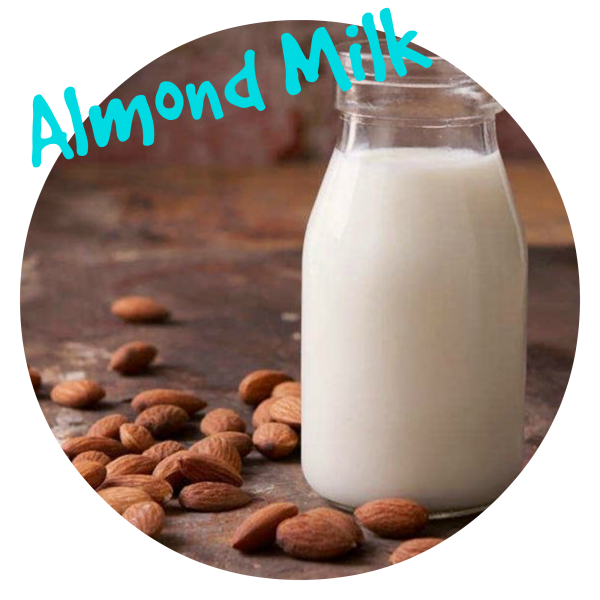Nut Seed Milk

Preparation in making nut milk is important, especially for people who already have digestive problems and food sensitivities. Almonds (as well as most other nuts) contain toxic substances known as enzyme inhibitors and phytates (phytic acid). These toxins can play havoc in the digestive system, blocking nutrients such as calcium, magnesium, copper iron and especially zinc. Soaking nuts in warm salty water overnight will activate enzymes that neutralise enzyme inhibitors and also breakdown a large portion of Phytic acid that allow the nutrients to be better absorbed in the digestive system. Homemade nut seed milk gives you the added reassurance and peace of mind in knowing that the nuts have been prepared and activated properly, unlike commercial brands which skip this process.
Alternatively, (if using almonds) you can blanch the almonds by simply removing the husk (brown almond skins). This is done by soaking them in hot boiling water until they swell and then rinsing them and pinching them between your fingers and thumb squeezing the nut right out of it’s skin. This may take a little time, however it does completely remove the phytates and enzyme inhibitors and is a better option for people who are more intolerant to nuts.
For the purpose of this recipe, we are using almonds, however almost any kind of nut or seed can be “milked”- not just almonds, but hazelnuts, Brazil nuts, macadamias, pecans, pumpkin seeds…the list goes on. Just refer to our ‘nut seed sprouting chart’ in the miscellaneous recipe section for soaking times.

| Prep Time | 5 Minutes |
| Passive Time | 14 Hours |
| Servings |
People
|
- 1 Cup Almonds Organic
- 1 Tbsp Celtic or Himalayan Sea Salt
- 3-4 Cups Filtered water
- 1-2 Tsp Organic flaxseeds
- 3-4 Pitted Dates Optional
Ingredients
|

|
- Add 3 cups of filtered water to a jug or bowl and mix in 1 tablespoon of salt
- Add 1 cup of almonds and cover with a tea towel or cheese cloth
- Soak the nuts in the salt water brine for 12 hours
- Rinse the nuts under filtered water to remove salt residue and discard the salt water brine
- Place the nuts in a clean jug or bowl and add 1 - 2 teaspoons of flaxseeds and 3 – 4 cups of water and place in the fridge for 2 – 3 hours. Adding the flaxseeds will allow the milk to thicken a little more. Exclude this step if you have no concern for thickness
- If you wish to add a little sweetener to the milk, this will be the stage that you will need to add the pitted dates to the mixture to soak for a few hours. This is optional
- Add the soaked nut mixture from the fridge (including the water) to a good strong blender, vitamix or thermo mixer and blend for as long as it takes to break down the size of the nuts into a pulp consistency
- Place a nut milk bag or cheesecloth over a bowl and pour the milk mixture through the cheesecloth or nut milk bag like a strainer
- When all the pulp and liquid has been strained through the nut milk bag or cheesecloth, squeeze any excess milk from the pulp mixture with your hands, allowing the milk to drain through the cloth. If you find that the milk is too rich, simply add more filtered water
- Store in the fridge for 2 – 3 days.
Clinical Notes
Why soak nuts and seeds?
- To neutralize enzyme inhibitors
- To remove or reduce phytates
- To encourage the production of beneficial enzymes


